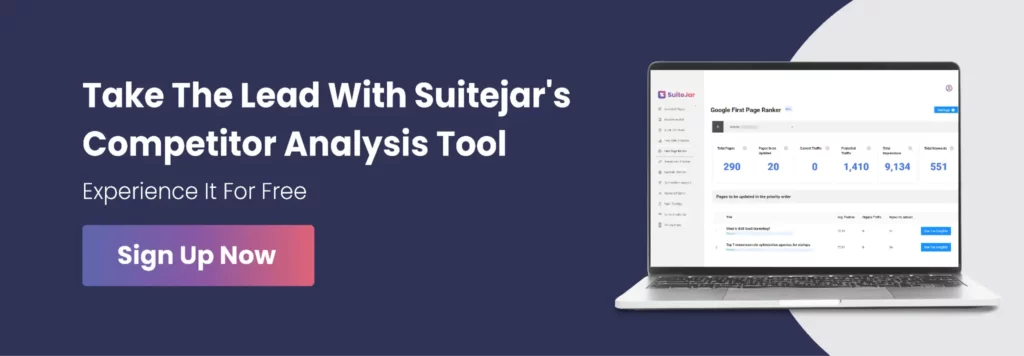Only $99 for a full year!
No credit card required
Rank on Google's first page in 3 months
A Complete Guide to Competitive Analysis
Jun 20, 2024 | user
Are you working extra hard to rank higher than other competitors in SERPs?
The first thing is to ensure that you dedicate time to analyzing your competitors well. This way, based on the results got by your competitors, you will be able to define what keywords have potential, which backlinks are reliable, what content is helpful, and what strategies work to improve your website.
This blog will help you understand competitor analysis and how you can do it in detail to take action successfully.
What Is Competitive Analysis In SEO?
What exactly does competitive analysis mean?
If you are getting into a competition, you would want to know who all the people are against you, their routines, strategies, or processes, and how you can outperform that and win. This is the same logic that applies in SEO competitive analysis.
Competitive analysis in SEO is researching and analyzing your competitor’s strategies to understand their strengths and weaknesses. Through this, you will get to know what they are doing right, what is wrong, and how these strategies can be added to your website SEO.
Doing a competitor analysis is getting a clear picture of the strategy for your business SEO as it gives you all the advantages.
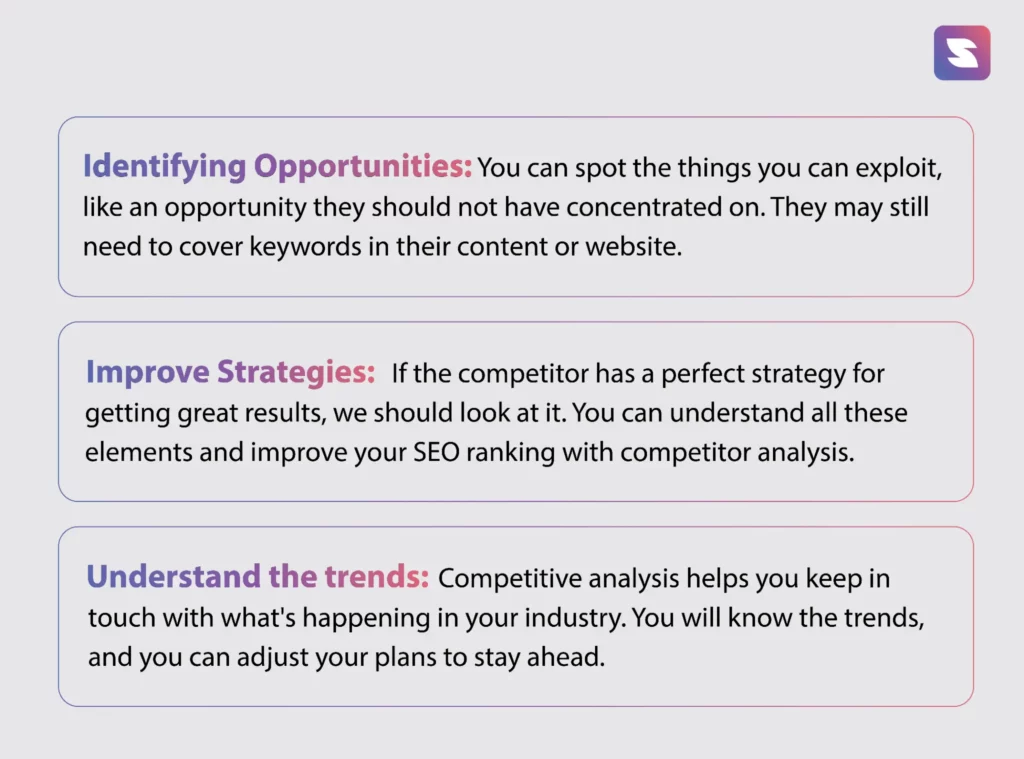
How To Do A Competitive Analysis For Your Website
When you are conducting a competitive analysis for your website, you must consider these basic steps,
1. Search For Your Competitors
First step in doing your competitor analysis is searching and identifying your competitors’ websites. You can categorize them to direct and indirect competitors.
- Direct competitors offer the same product as yours and target the same audience.
- Indirect competitors offer similar products but with different ways of market strategies.
So, after categorizing these websites, please take all of them and put them in a Google sheet. You can add their domain authorities and target keywords to respective competitor websites. This is a manual process of getting your competitors, like just searching on Google. You can also use a competitor analysis tool to get insights that ease your work.
2. Gather Data Of Your Competitors
Once you identify all your competitor’s websites, next is to analyze their strategies and all. You can look at their layout, content, user experience, product or services, pricing, and USPs. Use tools like Suitejar to get all their data in one place and you can convert them into a sheet without any work stress.
Get into the SuiteJar SEO tool and go into the competitor analysis feature. Search for the URL of your competitor’s website and click ‘check now’.
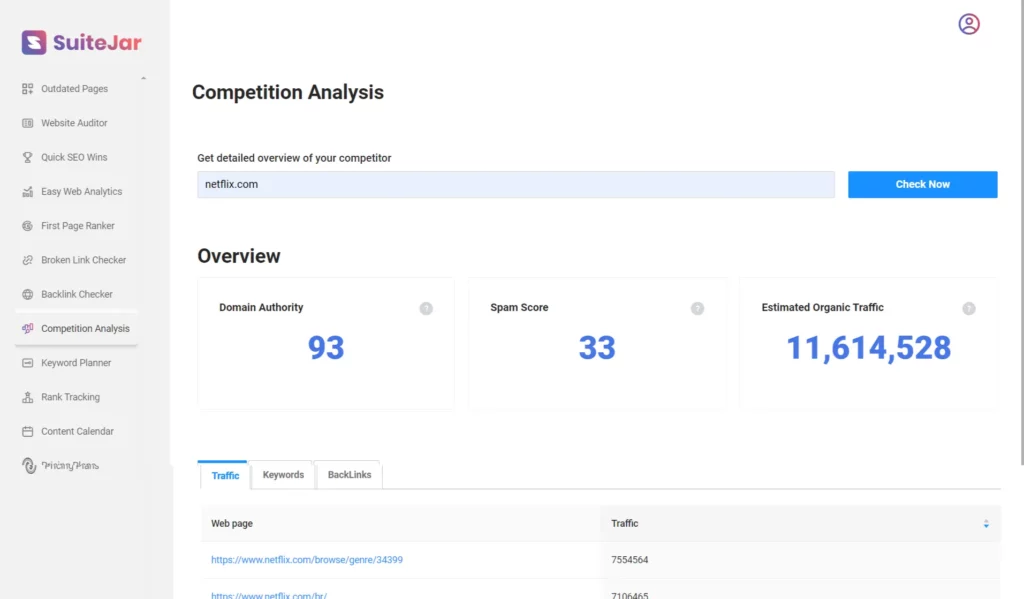
The tool provides insights like domain authority, spam score, estimated organic traffic, specific page traffic, and insights into their keywords and backlinks.
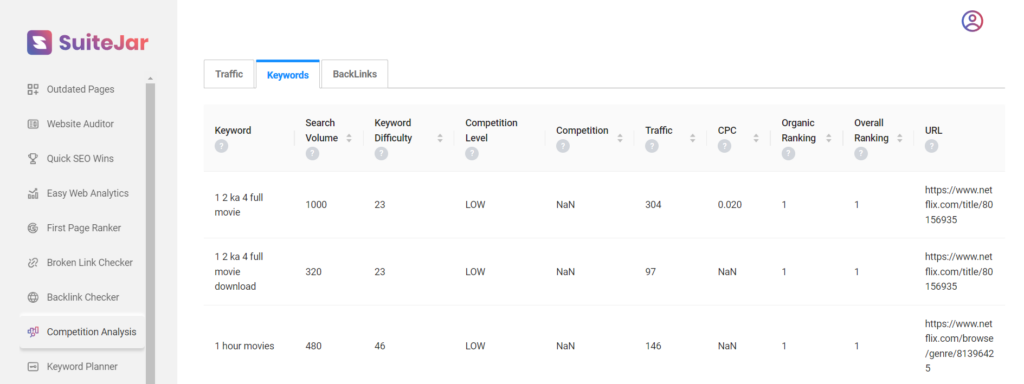
You can look at what are the keywords that you are sharing with the competitors’ websites and the traffic. You can select them as per your requirements by consulting the traffic also. Try with the competitors’ websites that you took for checking and get all the data that you want. Use this datasheet to develop the right strategy for your competitor analysis process.
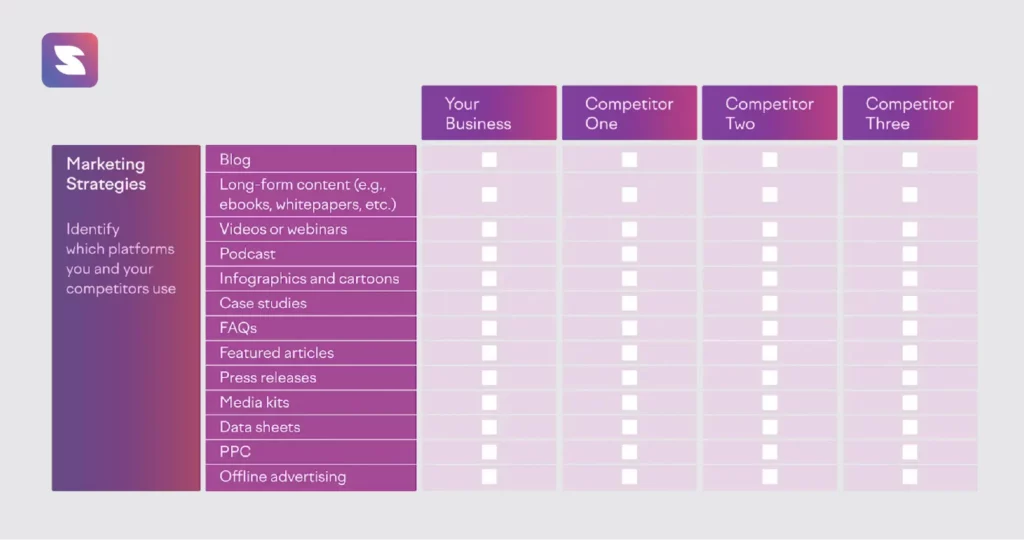
3. Keyword Gap Analysis
Now, you have the main competitors for your business, and the next step is to conduct a keyword gap analysis. This refers to the keywords that your competitors are ranking for but you are not. By understanding these gaps, you can use those in your SEO strategy and get more organic traffic to your website.
- Identify Missed Opportunities: This process helps you get high-value keywords that you are not targeting in your SEO strategy. It helps you get more traffic to your website like they capture traffic on your competitor’s website.
- Understanding Strategies: Analyzing the keywords that your competitors are ranking gives you insights into their strategies, too. This helps you determine which keywords are ranking and why.
- Optimize Content: After learning the keywords of your competitors, you can optimize your website content based on your selected keywords. You can create new content and optimize it as per the target keywords, which helps you in getting high traffic.
So make sure to do a proper keyword gap analysis in your competitor analysis. It helps you capture more traffic and ensure the content is relevant and valuable to your audience. Regularly do that then you adjust your strategy in your website seo.
Further Read: Best 7 Keyword Gap Analysis Tools in 2024
4. Understand Competitor Content Strategies
Content is the main factor that brings you traffic. When you do competitor analysis, you have to look at their content analysis to see which type brings them more traffic and impressions. You can try that on your website as they give them as much advantage. You can go into suitejar’s ‘easy web analytics feature’ and get the data for the competitor’s website.
It will give you complete pages that come with engagement details on top pages. You can see the different pages with their page views, total users, average engagement time, and bounce rate. This helps you to determine which content is suitable for your website. You can create a content template after selecting your competitors so that you can categorize them perfectly for your analysis.
5. Backlink Profiles And Identify Gaps
Competitor backlink profile examination is essential in competitor analysis in SEO. These backlinks are a key factor in SEO as they send signals to search engines that the website is trustworthy.
So analysing the quality of backlinks that in your competitors helps you understand different link building efforts.
You can identify potential opportunities for your website link building strategy. Setup the backlink gaps in your strategy and improve search engine rankings.
- Collect Backlink Data: Use SEO tools to gather backlink data for your competitors. These tools can provide a list of all the backlinks pointing to your competitor’s websites, along with metrics such as domain authority and link quality.
- Analyze Backlink Quality: Not all backlinks are created equal. Analyze the quality of each backlink by looking at the authority of the linking site, the relevance of the content, and the context in which the link is placed. High-quality backlinks come from reputable, relevant sites and are placed in a context that makes sense.
- Identify Common Backlink Sources: Look for websites that frequently link to your competitors. These common sources can be prime targets for your own link-building efforts. If they link to similar content on your competitors’ sites, they may be interested in linking to your content as well.
- Spot Backlink Gaps: Compare your backlink profile with those of your competitors to identify gaps. These gaps represent opportunities where your competitors have backlinks, but you do not. Focus on closing these gaps by targeting the same sources for your link-building efforts.
- Develop a Link-Building Strategy: Based on your analysis, create a strategy to acquire backlinks from the identified sources. This might involve creating high-quality content, reaching out to website owners, or engaging in guest blogging. Tailor your strategy to leverage the strengths and address the gaps in your current backlink profile.
Also Read: 11 Best Free Backlink Checker Tools in 2024
Conclusion
This article has provided valuable information on the basic steps to do while analyzing competitors. It is always helpful to establish a comprehensive approach to competitor analysis in your business. You will get benefits boosted by using competitor analysis tools like SuiteJar, which will give you useful information with proper features.

